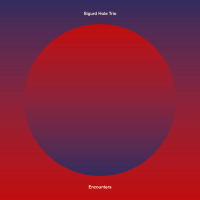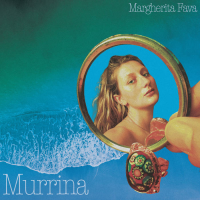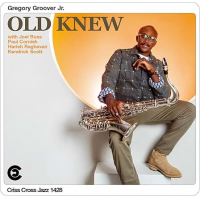Home » Jazz Articles » Album Review » Joe Henderson: The Complete Joe Henderson Blue Note Stud...
Joe Henderson: The Complete Joe Henderson Blue Note Studio Sessions
Big band and bop were duking it out in the late 1940s, bebop gained a foothold in the 1950s and the 1960s saw some amazingly creative artists emerge as they conjured up even more jazz hybrids (straight jazz, Avant-Garde, fusion and more). Henderson began to come of age during the very late 1950s, the tail end of one of the most dynamic and creative decades for jazz. He then moved confidently into the 1960s and beyond. He began to gain momentum in the 1960s (sitting in with saxophone master Dexter Gordon early on), learned from listening to other sax giants including Charlie Parker and Sonny Rollins and soon teamed up with numerous A-list artists including trumpeter Kenny Dorham, a Blue Note co-artist. The spotlight shifted a bit during the seventies and eighties for Henderson but he was amazingly prolific in the 1990s. Verve championed him during that decade with a high profile 'come back' campaign and sessions such as Lush Life (1982) contained everything from the supple and smoky "Isfahan" and "Blood Count" to the soaring and spontaneous "Johnny Come Lately." Touring took him to various venues and in a talk backstage after a mid-1990s concert, Mr. Henderson was dapper and smartly dressed, low key, quiet and reserved. He was a joy to talk to. But his constant companion, a lit cigarette, was absent, probably due to venue restriction (chain smoking eventually took him down in 2001.)
Mosaic collected nearly fifty cuts on five CDs and captured a world of spontaneous creativity. In addition, a modest yet informative booklet is included. A book's worth of praise could follow, so let's look at a few tracks from each compact disc: Everything gets underway with the title cut from trumpeter Kenny Dorham's Una Mas (1963) album in which Henderson joins as a featured sideman. At over fifteen minutes, the opening track is a celebration of the then contemporary sounds of Bossa Nova, with hints of other styles including the blues. He may be the second billed musician on the disc, but Henderson's sax is supple, lush and creatively enticing as a close bond was being forged between the two men. Everyone swings, and they are upbeat on "Straight Ahead," one of the other standout tracks from the Dorham-lead sessions.
Page One (1963), is Henderson's debut album as a leader, with Dorham supporting Henderson this time around. Dorham even wrote the first two tracks, including "Blue Bossa," the subtle lead off. Henderson wrote the final four, including "Recorda Me." A subtle and easy-going number, the more experimental Henderson was still waiting in the wings.
Compact disc number two (of five) opens with a pair of alternate takes of cuts from disc one before they launch into Henderson's second Blue Note album as a leader, Our Thing (1964). Recorded only a few months after Henderson's first album, Dorham returns with trumpet in hand as a symbiotic partner as they tag team back and forth. The quintet continued to play musical chairs with the piano seat: Herbie Hancock was on the Dorham-lead LP, McCoy Tyner was present for Henderson first album as a leader and then Andrew Hill took over. There's an abundance of vibrant bop and more up-tempo excursions throughout. Several additional alternate takes wrap up the CD as nineteen of the twenty tracks on the first two discs run over five minutes, giving the musician time to explore, expand and experiment. Pianist Tyner is back for Henderson's third album as a leader, In 'N Out (1964). "Serenity" is indeed serene and light but not as laid back or pensive as the title would suggest. "Brown's Town" allows improvisation and bop to lead the way. The music flows into Dorham's 1964 album (and his final disc) as "Trompeta Toccata," the twelve-minute plus title track that escorts us back to South America complete with an assertive Latin bounce (with a soothing reverie about halfway through.) Later, "Mamacita" offers similar Latin rhythms, complete with pianist Tommy Flanagan's brisk, tight solos.
The fourth disc opens with Henderson distilling the group down to four as he decides to enlist Tyner on piano, Bob Cranshaw on bass and Elvin Jones on drums. Inner Urge (1965) , Henderson's fourth album as a leader, was recorded in 1964 but wasn't released until 1965. Sadly, the partnership with trumpeter Dorham on this collection had come to an end although other trumpet veterans contribute mightily. The CD finishes with five cherry picked Henderson mid-decade compositions but, in this case, he's the guest saxophonist. Trumpeter Johnny Coles leads the way on "Hobo Joe" while Blue Mitchell heads up "Step Lightly." Both are silky smooth and, at over eight minutes apiece, are rich with creative solos. The fifth and final CD finds Henderson and company creating a bigger, fuller sound as he enlists a larger cast of players including Curtis Fuller on trombone and Bobby Hutcherson on vibes. It's Lee Morgan's turn to play trumpet while Cedar Walton covers the piano, Ron Carter is on bass and Paul Chambers takes over on drums. Morgan's opening salvo of rapid bursts and quick splashes of sound set the pace while Henderson is a reliable as ever (there's even a slight hint of Coltrane on "Mode For Joe") while Morgan eases up and mutes his trumpet while an always reliable Carter sets the pace with his upright bass. A standout track, "Caribbean Fire Dance," is a frantic, hedonistic ritual as the vibes send musical embers into the air and the drums are hypnotically tribal.
The Henderson of the 1960s offered the final glow of 50s jazz and then gave us angular bop and free flowing improv as he teamed up with influential sidemen including a who's who of pianists. In addition, a musical and personal partnership with trumpeter Dorham blossomed. If you haven't spent a lot of time with Mr. Henderson yet, now's the time.
Personnel
Joe Henderson
saxophoneKenny Dorham
trumpetHerbie Hancock
pianoTony Williams
drumsMcCoy Tyner
pianoBob Cranshaw
bassDuke Pearson
pianoRichard Davis
bass, acousticElvin Jones
drumsTommy Flanagan
pianoRon Carter
bassCedar Walton
pianoLee Morgan
trumpetCurtis Fuller
tromboneGrant Green
guitarBobby Hutcherson
vibraphoneJ.J. Johnson
tromboneAl Harewood
drumsWoody Shaw
trumpetAndrew Hill
pianoAdditional Instrumentation
Butch Warren; Pete La Roca; Eddie Kahn; Albert "Tootie" Heath; Leo Wright; Walter Perkins;Gene Taylor; Roy Brooks; Roger Humphries; Joe Chambers.
Album information
Title: The Complete Joe Henderson Blue Note Studio Sessions | Year Released: 2021 | Record Label: Mosaic Records
Tags
PREVIOUS / NEXT
Support All About Jazz
 All About Jazz has been a pillar of jazz since 1995, championing it as an art form and, more importantly, supporting the musicians who make it. Our enduring commitment has made "AAJ" one of the most culturally important websites of its kind, read by hundreds of thousands of fans, musicians and industry figures every month.
All About Jazz has been a pillar of jazz since 1995, championing it as an art form and, more importantly, supporting the musicians who make it. Our enduring commitment has made "AAJ" one of the most culturally important websites of its kind, read by hundreds of thousands of fans, musicians and industry figures every month.









































